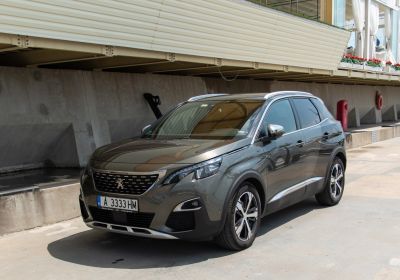 2020 Toyota C-HR I (facelift 2020) Dimensions, Size & Specs
2020 Toyota C-HR I (facelift 2020) Dimensions, Size & SpecsMeasurements of the 2020 Toyota C-HR I, engineered for optimal performance and comfort
| Dimensions | |
|---|---|
| Length: | 4390 mm172.8 in14.4 ft |
| Width: | 1795 mm70.7 in5.9 ft |
| Height: | 1565 mm61.6 in5.1 ft |
| Trunk Capacity: | 297-377 liter10.5-13.3 cu ft |
| Weight Specifications | |
| Curb Weight: | 1375-1485 kg3031-3274 lbs |
| Maximal permitted Weight: | 1845-1960 kg4068-4321 lbs |
| Tire Specifications | |
| Rims Sizes: | 17-inch rims:
|
| Tire Sizes: |
|
The Toyota C-HR I facelift, produced between 2020 and 2023, is a compact SUV that combines sporty styling with practical dimensions suited for urban and suburban driving. Measuring 4390 mm (173 inches) in length, 1795 mm (70.7 inches) in width, and 1565 mm (61.6 inches) in height, this generation offers a balanced footprint that provides ease of maneuverability without sacrificing interior space. The vehicle's curb weight ranges from 1375 to 1485 kilograms (approximately 3034 to 3275 pounds), reflecting its compact SUV category while offering durability and stability on the road. Maximum permissible weight varies between 1845 and 1960 kilograms (4067 to 4321 pounds), accommodating passengers and cargo efficiently. The C-HR I facelift supports luggage capacities from 297 liters (10.5 cubic feet) up to 377 liters (13.3 cubic feet) depending on seat configuration, making it practical for everyday use and weekend trips. It rides on either 17- or 18-inch rims, with sizes including 6.5J x 17 and 7J x 18, fitted with tires sized 215/60 R17 96H and 225/50 R18 95H respectively, ensuring a balanced ride with good road grip and comfort. Overall, the 2020 Toyota C-HR facelift generation stands out as a versatile compact SUV, ideal for drivers seeking a combination of style, manageable dimensions, and everyday utility.
Discover the standout features that make the 2020 Toyota C-HR I a leader in its class
Have a question? Please check our knowledgebase first.
The Toyota C-HR I facelift 2020 measures 4390 mm (173 inches) in length, 1795 mm (70.7 inches) in width, and 1565 mm (61.6 inches) in height. These dimensions place it solidly in the compact SUV segment, offering a balance of urban maneuverability and interior space. The size makes it ideal for city driving while still providing sufficient cabin room for passengers and cargo.
The curb weight of the Toyota C-HR I facelift 2020 ranges between 1375 kg and 1485 kg (around 3034 to 3275 lbs), depending on specific trim and options. The maximum weight, including passengers and cargo, ranges from 1845 kg to 1960 kg (4067 to 4321 lbs). This weight profile contributes to the vehicle's agility and fuel efficiency while maintaining stability on the road.
The luggage capacity of the Toyota C-HR I facelift 2020 ranges from 297 liters (10.5 cubic feet) with all seats in use to a maximum of 377 liters (13.3 cubic feet) when space is optimized. This volume is sufficient for everyday needs such as grocery shopping, luggage for weekend trips, and sports equipment, making it practical for urban and suburban lifestyles.
This generation of the C-HR offers rim sizes of 17 inches and 18 inches, with widths including 6.5J x 17 and 7J x 18. Tire options for the model include 215/60 R17 96H and 225/50 R18 95H. These sizes balance ride comfort, handling performance, and aesthetics, ensuring a stable yet responsive driving experience tailored to city and light off-road conditions.
Yes, the Toyota C-HR I facelift 2020 fits comfortably into a standard residential garage. With its width of 1795 mm (70.7 inches) and height of 1565 mm (61.6 inches), it is designed to comply with average garage dimensions found in many homes worldwide. Its length of 4390 mm (173 inches) also ensures it does not pose challenges when parking indoors, while leaving enough space for opening doors and movement.
Compared to the pre-facelift Toyota C-HR, the facelifted 2020 model maintains very similar exterior dimensions, with length, width, and height nearly unchanged. However, the facelift brought design refinements that improved aerodynamics and interior space utilization. The slight variations contributed to better driving dynamics and a more polished look without compromising the compact SUV's practicality.
In comparison to similar compact SUVs like the Honda HR-V, Nissan Juke, and Mazda CX-30, the Toyota C-HR I facelift 2020 is positioned competitively in size. Its length of 4390 mm (173 inches) places it roughly in the middle of this category. With a width of 1795 mm (70.7 inches), it is slightly narrower than some rivals, aiding maneuverability in tight urban environments, while its height of 1565 mm (61.6 inches) is typical for a vehicle in this segment.
The Toyota C-HR I facelift 2020's compact dimensions, specifically its length of 4390 mm (173 inches) and width of 1795 mm (70.7 inches), make it highly suitable for navigating congested city streets and tight parking spaces. Its moderate height of 1565 mm (61.6 inches) helps provide good visibility without sacrificing ease of entry and exit. These factors combine to make the C-HR user-friendly for daily urban commuting.
While the exact ground clearance isn't specified here, the Toyota C-HR typically offers a clearance around 165 mm (6.5 inches), which facilitates comfortable handling over uneven urban roads, speed bumps, and mild off-road conditions. This balance between ground clearance and vehicle height ensures the SUV retains stability and minimizes body roll while enhancing versatility for varied terrains.
Yes, the 2020 Toyota C-HR I facelift shows weight variations between 1375 kg and 1485 kg (3034 to 3275 lbs) depending on trim levels, optional equipment, and drivetrain configurations. These differences can influence fuel consumption, acceleration, and handling characteristics. However, the overall exterior dimensions remain consistent across trims, ensuring the same spatial footprint for all variants.
Discover similar sized cars.

| Production: | 2020-present |
|---|---|
| Model Year: | 2020 |
| Length: | 4390-4405 mm172.8-173.4 in |
| Width: | 1795 mm70.7 in |
| Height: | 1565-1575 mm61.6-62.0 in |

| Production: | 2018-2020 |
|---|---|
| Model Year: | 2018 |
| Length: | 4405 mm173.4 in |
| Width: | 1795 mm70.7 in |
| Height: | 1565 mm61.6 in |

| Model Year: | 2024 |
|---|---|
| Length: | 4460-4490 mm175.6-176.8 in |
| Width: | 1825 mm71.9 in |
| Height: | 1620-1648 mm63.8-64.9 in |

| Production: | 2021-2025 |
|---|---|
| Model Year: | 2021 |
| Length: | 4460 mm175.6 in |
| Width: | 1826 mm71.9 in |
| Height: | 1620-1646 mm63.8-64.8 in |

| Production: | 2020-2023 |
|---|---|
| Model Year: | 2021 |
| Length: | 4447 mm175.1 in |
| Width: | 2098 mm82.6 in |
| Height: | 1624 mm63.9 in |

| Production: | 2016-2020 |
|---|---|
| Model Year: | 2016 |
| Length: | 4447 mm175.1 in |
| Width: | 2098 mm82.6 in |
| Height: | 1615-1624 mm63.6-63.9 in |

| Production: | 2017-2020 |
|---|---|
| Model Year: | 2018 |
| Length: | 4439 mm174.8 in |
| Width: | 1835 mm72.2 in |
| Height: | 1580 mm62.2 in |

| Production: | 2021-present |
|---|---|
| Model Year: | 2022 |
| Length: | 4431-4440 mm174.4-174.8 in |
| Width: | 2035 mm80.1 in |
| Height: | 1582-1591 mm62.3-62.6 in |
